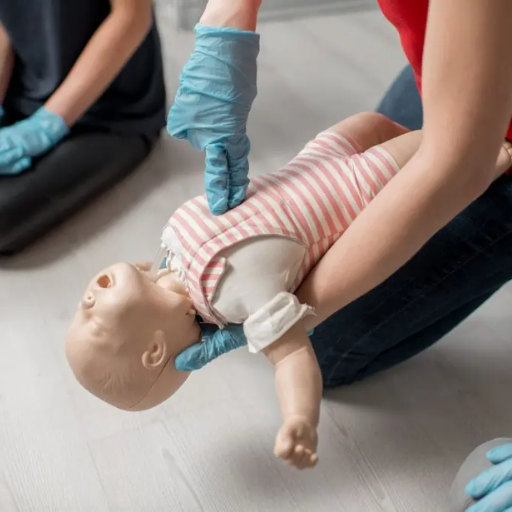
Infants tend to explore the world around them with their mouths, making choking a serious safety issue. This article aims to analyze the incidence of choking among infants, the factors contributing to its prevalence, and the practical strategies parents and caregivers can adopt to reduce the risks involved. Furthermore, recognizing the importance of providing prompt and thorough care, the article also provides a detailed guide on administering first aid to an infant choking on something. This blog uses statistical data as a means of prevention and practical recommendations for first aid to serve as a comprehensive guide to protecting infants from choking hazards.
What Are the Common Choking Hazards for Babies?
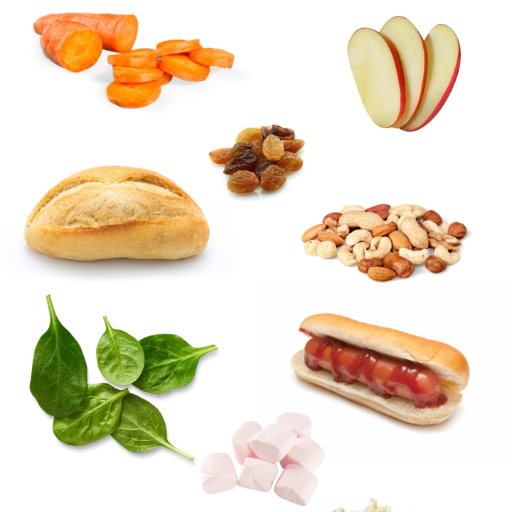
The utmost concern with infants is not the most commonly known issue, which is drowning, babies have the tendency to gulp everything which poses a threat of severe choking. As children grow and begin to eat, there’s differing little that needs to be done for their safety. Grapes, sausages, popcorn, hard nuts, toiletries like pen caps, buttons, and even coins pose a threat to kids’ choking. Children can poke themselves with wooden toys and furniture and raise concerns about choking hazards. With these being present, infants need utmost safety as they can easily reach for these items. Parents must consciously work on their child’s safety by preventing them from achieving these items.
Understanding Choking Hazards in Infants
I have banded specific actions to ensure that my son does not come to any harm. Among them, the most impactful is indeed guarding all food items. All hard foods with the chance of blocking have been eliminated. These are candy, nuts, and vegetables. When all family members are present at meal time, I serve rice alongside friendly chat. Friendly banter aids immensely in keeping children distracted whilst chewing.
In addition to food, I make it a point to remove or secure small items that could pose choking hazards, such as coins, little toys, furniture and packaging parts, buttons, and other small toys that could be introduced to a child. When introducing a new toy or item, I ensure it is age-appropriate and safe. Balloons are also placed out of reach, posing a serious risk when popped or deflated. I also have basic first aid knowledge, such as infant CPR and the Heimlich maneuver, to enable me to act quickly during an emergency.
Items That Pose a Choking Risk
In assessing potential choking hazards, I prioritize food and non-food items. Grapes, nuts, candies, popcorn, meat, and raw vegetables should be modified or eliminated for young children due to the high probability of students choking on them. Toy parts, marbles, coins, batteries, and even broken balloons also are significant choking risks. I make sure to dispose of or keep these items out of reach. Furthermore, I constantly monitor my child's playtime and make sure the surroundings are clear of any such objects that can be dangerous.
The Role of Small Objects and Food
I emphasize education and prevention while addressing the hazards posed by small objects and food items. I ensure all items served to my child do not have a high choking risk, for example, by slicing grapes into quarters or removing hard candies altogether. Non-food items are routinely checked, such as toys around the house where small parts or batteries are highly threatening. When monitoring playtime, I supervise what the child can access so there is no chance of other hazards. It is also advisable to educate myself to create an environment that tackles the likelihood of children choking. Informing myself of possible risks and best practices is more manageable, thanks to online sources.
How Can You Prevent Choking in Infants?
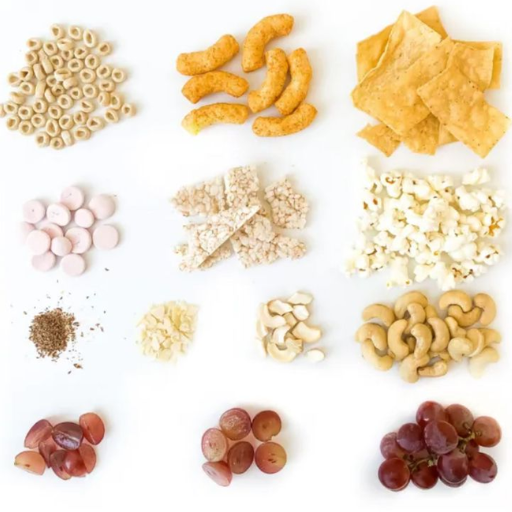
Choking preventive measures for babies needs proactive monitoring, safe feeding procedures, and a surrounding without potential threats. The infant should always be placed upright when being fed and be given soft, small, and age-appropriate foods that are easy to swallow. Do not give nuts, grapes, or sticky foods like peanut butter that are hard, round, or sticky. Ensure that the living and play areas are devoid of small objects that can easily be swallowed, coins, buttons, or other items. Check regularly for safety clearance for the toys and all household implements within reach of young ones. All activities should be closely monitored. Further self-education on infant first aid and Alexa on infant choking response techniques can be additional safety and preparedness for other emergencies.
Effective Choking Prevention Methods
To avert choking incidents, I prioritize establishing a safe atmosphere and being preventive. I make certain meals for young kids that do not include whole grapes, nuts, or big pieces of food since those are too hard, round, and sticky. In addition, I slice food into small portions and prompt slow, careful eating while seated. I place coins, toys, buttons, and similar small objects out of reach, and I regularly check if the toys I give them are safe. I have also learned basic first aid, such as CPR and the Heimlich maneuver, to ensure I can act swiftly in emergencies. The principles of supervision and awareness are my primary approaches to ensuring no choking on food.
Choosing Safe Foods for Your Baby
When choosing food for your child, factor in their current stage of development to ensure it is safe and nutritious. Start with single-ingredient purees that are soft and easily swallowable, such as bananas, steamed carrots, or sweet potatoes. The food should not contain sugar, salt, or other artificial additives.
Additionally, do not give small, round, or hard items such as nuts, whole grapes, or raw vegetables, as they pose a serious choking risk unless properly cooked or chopped for easier consumption. For example, vegetables should be steamed to soften them, and grapes can be cut into quarters. When offering foods the first time prevalent allergens like eggs, peanuts, or dairy, do it in small bites at a time and consult your pediatrician if there are any concerns.
When it comes to minimizing choking hazards for infants under twelve months, there are clear guidelines that must be followed. For example, foods should be cut into pieces no more significant than half an inch in size, and the food must be closely monitored to ensure safety. The challenge lies in meeting the baby’s chewing and swallowing capabilities. Smooth purees can be served as the child’s first food, slowly transitioning to small, soft chunks as they develop. This strategy shifts the focus towards safety and the reduction of risks related to the introduction of solid food.
Supervising Infants and Young Children
As a guardian of infants and toddlers, I am responsible for providing the children with constant supervision when they are eating or playing to mitigate risks. I also focus on the several factors of concern. For instance, I prepare food appropriate for their developmental stage to ensure it’s safe and can be easily swallowed. Moreover, I try to eliminate all distractions during mealtime to encourage attentive behavior, ensuring they will not choke on food while I attend to their needs. Following reputable sources' safety guidelines is essential for safety and healthy growth.
What to Do When an Infant is Choking?

When timing is of the essence, and harm needs to be prevented, choking is most definitely not the ideal circumstance in which an infant should find himself. Given that infants choke, the first step is to figure out whether they can cough, breathe, or even cry, for that matter. If they are not able to do, ensure that the head of the infant is placed lower than the chest and the infant is then positioned face down on your forearm. When they are in that position, deliver around five sharp strikes on the center of their shoulder blades with the heel of your hand. If the blockage still hasn’t been resolved, rotate the infant onto their back and do around five chest thrusts. For the discrepancy to be solved or emergency care to be reached, make sure you switch between chest thrusts and back blows. If the infant becomes unresponsive or there is further choking, be sure to call for medical assistance promptly. Much like any other situation requiring first aid training, these situations demand significant reliability from caregivers. Hence, they need to be trained so they are never caught unprepared.
Steps for First Aid for Infants
- Assess the Situation
- Symptoms: Check if the infant is coughing, crying, or breathing normally. If they cannot do these, proceed immediately to first aid steps.
- Important Parameter: Ensure the infant's airway is visibly blocked, or their breathing is impaired before attempting intervention.
- Perform Back Blows
- Positioning: Place the infant face-down along your forearm, supporting their head with your hand. Ensure the infant’s head is lower than their chest to utilize gravity effectively.
- Action: Use the heel of your hand to deliver five firm back blows between the infant's shoulder blades.
- Important Parameter: Use controlled but firm force to avoid injuring the infant while dislodging the object.
- Perform Chest Thrusts
- Positioning: Turn the infant onto their back, supporting them on a firm surface or your forearm.
- Action: Place two fingers at the center of the chest, just below the nipple line, and press inward and downward sharply. Perform up to five chest thrusts.
- Important Parameter: With each thrust, aim to depress the chest about 1.5 inches (4 cm) while avoiding excessive force.
- Alternate Techniques If Needed
- Repeat cycles of five back blows followed by five chest thrusts until the object is expelled or the infant becomes responsive.
- Call Emergency Services
- If the choking persists or the infant loses consciousness, call for emergency medical assistance immediately (911 or emergency number in your region).
- CPR for Unresponsive Infants
- If the infant becomes unresponsive, begin infant CPR (Cardiopulmonary Resuscitation). Deliver 30 chest compressions followed by two rescue breaths, continuing until medical professionals arrive.
- Important Parameter: Compress the chest at a depth of about 1.5 inches (4 cm) at 100–120 compressions per minute.
Regularly reviewing and practicing infant first aid procedures ensures caregivers can respond effectively during an emergency. Training is highly recommended to familiarize yourself with these techniques.
How to Perform Back Blows and Thrusts
Performing back blows and chest thrusts for an infant who is choking requires precise steps to ensure effectiveness and minimize harm. Here is a comprehensive guide based on validated first-aid techniques:
- Positioning the Infant
- Sit or kneel in a stable position and support the infant’s body by placing them face down along your forearm.
- Ensure the infant’s head is lower than its chest, securing its jaw with your thumb and fingers to stabilize the head and neck.
- Delivering Back Blows
- Using the heel of your free hand, deliver up to 5 firm back blows between the infant’s shoulder blades.
- Ensure each blow is distinct and deliberate to create enough force to dislodge the foreign object without causing harm.
- Repositioning for Chest Thrusts
- If the obstruction is not cleared, turn the infant face up, supporting their head and neck. Keep the head lower than the chest.
- Place two fingers at the center of the chest, just below the nipple line. Avoid pressing on the lower end of the sternum to prevent injury.
- Performing Chest Thrusts
- Deliver up to 5 chest thrusts by pressing down approximately 1.5 inches (4 cm) steadily.
- Allow the chest to return to its position between thrusts while maintaining control.
- Key Considerations
- Alternate between 5 back blows and five chest thrusts until the obstruction is removed or the infant becomes unresponsive.
- If the object is visible in the infant’s mouth, carefully remove it with a sweeping finger. Never attempt blind finger sweeps, which can push the object further into the airway.
These methods align with first aid standards and are critical in mitigating choking emergencies. Even if the obstruction is successfully removed, further medical evaluation should always be sought after a choking incident.
When to Call for Emergency Aid
In the case an infant becomes unresponsive or displays effect breathing even after extracting the obstruction, help should be sought urgently by calling for emergency services. If the infant is unresponsive and does not breathe, commence CPR. Furthermore, if the object cannot be removed after multiple rounds of back pounding and chest thrusts, it is crucial to obtain medical assistance immediately. Professional intervention can be life-saving, and it is advisable in any scenario.
How Does the American Red Cross Aid in Choking Situations?

The Red Cross stands out by providing superior education and Richard resources that focus on swift and effective responses to choking emergencies. Their training modules, such as CPR and First Aid certification courses, prepare individuals to identify and respond to choking emergencies in infants and adults. These courses target particular issues such as back blows, chest thrusts, and the necessity of speed and proper action. Moreover, the organization supplements its work with online resources, ensuring the public remains informed and prepared.
Training Programs for Choking Prevention
The American Red Cross offers choking prevention training with specific attention to response preparedness. In-person workshops and online sessions complement the training. Parents, caretakers, and medical professionals can all receive the necessary credentials. The following training components are noteworthy:
- Identifying Symptoms of Choking: Symptoms include inability to Communicate, suffocation, wheezing, and bluish lips.”
- Specific Age Group Techniques:
- Adults and children older than 1 year: The recommended procedures entail five back blows alternating with five abdominal thrusts (Heimlich maneuver), abiding by established regulations.
- Children under 1 year: Procedures include five back blows and two finger chest compressions – 5 repetitions.
- Knowing When to Call for Help: Recognizing that emergency services are required when multiple attempts to remove the obstruction have failed and the patient has lost consciousness.
- Use of Automatic External Defibrillators (AED): Some cases of choking can result in cardiac arrest. The training assumes proper employment of AED alongside CPR for all practitioners.
These programs strive to enhance participants' confidence and competency. They are also evaluated based on criteria such as applying techniques and skills gained to determine objectives.
Guidelines for First Aid in Choking
Determining whether or not a person is choking can be pretty challenging. As such, before taking any action, try determining whether or not the individual is capable of coughing, as this will help make dealing with the person much more straightforward. If they can make noise, ask them to cough more, which can help the dislodged object come out. If the individual cannot breathe, is not able to talk, and seems to be panicking while grabbing their throat, then they are most likely choking on an object and would like some immediate help. To administer first aid for children and adults above the age of one, alternate between five strong abdominal thrusts and five powerful blows to the back until the assistance arrives or the person can breathe. For children under the age of one, do take extra care while applying for first aid. Start with five impressive blows to the back, then proceed with five outward pushes to the chest using two fingers. Make sure to have the individual examined by a professional for any internal injuries or other complications, even if the person seems fine after the first aid.
Regardless of the scenario, it is imperative to stay calm when someone is choking and approach the issue methodically.
Resources for Infants and Children
To manage choking in infants and children, it is advisable to use reputable sources from recognized institutions. The American Red Cross has thorough first-aid instructions for all age levels, including pictures and videos illustrating each step. The Mayo Clinic instructs in detail and stresses prevention techniques of eating and environments that are child-proof, in addition to many other things. Also, the AAP has pediatricians who provide information on essential factors regarding infant choking emergencies and guidelines on when to seek medical attention. All these sources are beneficial in teaching and refreshing essential skills that must be executed confidently.
How Can Parents Reduce Their Child’s Risk of Choking?

There are a variety of choking risks parents can alleviate with children as young as toddlers. Constantly monitor young children during meal times. It is also advisable to encourage them to eat sitting upright to avoid the likelihood of food being inhaled. For young children, avoid or cut into small pieces hard candies, grapes, nuts, hotdogs, or other foods that have a high probability of causing choking. These young children should be carefully supervised in a setting where they may encounter some household toys or objects. Also, ensure that children can not access objects or toys that can be choked on. Keep yourself up to date with recent developments on choking hazards and ensure that you get help and advice from bodies like the American Pediatric Association. Reducing the chances of choking accidents requires parents to childproof their homes and be alert and attentive at all times.
Identifying Choking Risks at Home
To avoid choking risks at home, I always pay attention to the food options available to my children, such as whole grapes, nuts, hot dogs, and others. I make it a point to chop them into small pieces or avoid serving them to younger children altogether. While monitoring and restricting access to small household activities, I ensure that every toy within its reach has no small detachable parts that can be potentially harmful if swallowed. Activities such as buttons, coins, and batteries are also kept out of their reach. I always stay abreast of the most recent safety guidelines and proactively attempt to childproof my home to lessen the chances of risk. My best means of protection against these potential choke hazards are based on diligence and careful monitoring of my child.
Adapting to Children's Physical and Mental Abilities
Shifts to children's physical and mental capabilities require understanding their stages of development and ensuring the surrounding environment suits their abilities. Younger children tend to have less developed motor skills and self coordination, thus small objects, or anything that could lead to choking, have to be taken away. For example, toys should comply with the ASTM F963 safety standards in the United States, which deals with the size and material of the toys as well as any mechanical functions that could make them unsafe. A child's inquisitiveness and problem-solving abilities are bound to exceed their ability to comprehend the danger. Thus, supervision is crucial alongside communication.
When introducing new activities and objects, gauge how the child would react. For example, children under three can choke on toys that pass through a choke test cylinder (1.25 inches in diameter), and thus, such toys should be avoided. Similarly, children need to be given appropriate information about safety so older children are explained why they shouldn't put small things in their mouths. Lastly, the layouts of the environment should be regularly adjusted due to the child's changing abilities to ensure safety alongside a challenge suitable for their level.
References
-
Prevention of choking among children - Published by the American Academy of Pediatrics, this article discusses strategies for choking prevention in children.
-
Preventing choking and suffocation in children - This source emphasizes the importance of CPR and first aid training for parents and caregivers.
-
Choking Prevention and First Aid for Infants and Children - A comprehensive guide on choking hazards and first aid measures for infants and children.
Frequently Asked Questions (FAQ)
Q: How common is choking in infants, and what are the primary causes?
A: Choking incidents are relatively common in infants and children younger than 5 years. The leading causes include solid foods, raw vegetables, and toys with small parts that can quickly get stuck in their airway.Q: What foods can be choking hazards for children?
A: Foods like raw vegetables, whole grapes, and nuts can be choking hazards for children. To reduce the risk of choking, it is essential to cut food into small pieces and ensure children chew their food well.Q: What should I do if my toddler is choking?
A: If a toddler is choking and unable to cough, you should perform the Heimlich maneuver. Specific techniques are required for infant choking, and knowing the appropriate aid for infants and children is crucial.Q: How can I prevent choking in my child?
A: Prevention includes supervising meals, ensuring that children chew their food well, and avoiding toys with small parts. It is also crucial to cut food into small pieces and avoid giving children foods that can easily cause choking.Q: When should I call for emergency help if a choking incident occurs?
A: Call for emergency help immediately if the child cannot breathe, cough, or speak after choking occurs. While waiting for help, perform the appropriate first aid measures.Q: How is infant CPR different from adult CPR?
A: Infant CPR involves gentle chest compressions and rescue breaths tailored to the infant's size. The American Heart Association provides guidelines on how to perform infant CPR.Q: What are some common choking hazards for children besides food?
A: Besides food, small toys, coins, and other small objects are common choking hazards for children. These items can quickly get stuck in a child's airway.Q: How can the child's physical and mental abilities affect choking risks?
A: A child's developmental stage affects their ability to chew food properly and understand the dangers of small objects, increasing the risk of choking.Q: Why is it important for children to know the Heimlich maneuver and CPR?
A: Knowing the Heimlich maneuver and CPR, especially infant CPR, is crucial for effectively responding to choking incidents and providing life-saving aid when choking occurs.Q: Are older children at risk of choking as well?
A: Older children can also choke, especially if they do not chew their food well or accidentally inhale objects. It's essential to remain vigilant and educate them on safe eating practices.


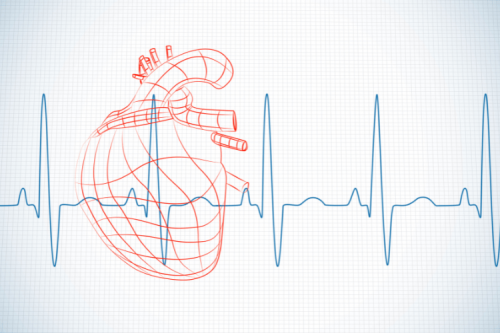
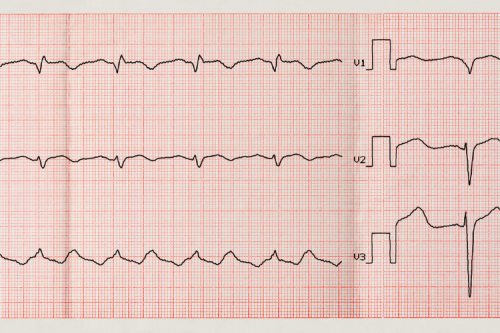

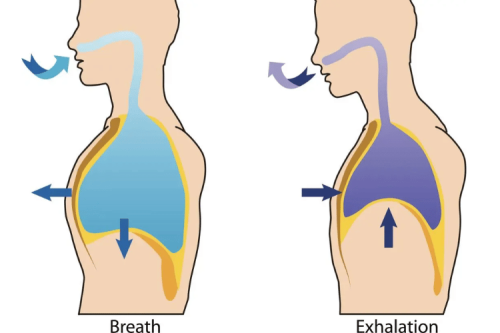
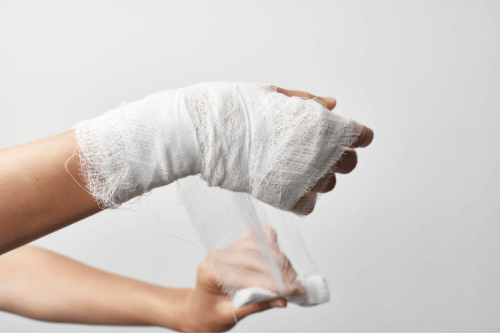
 Login with Google
Login with Google Login with Facebook
Login with Facebook